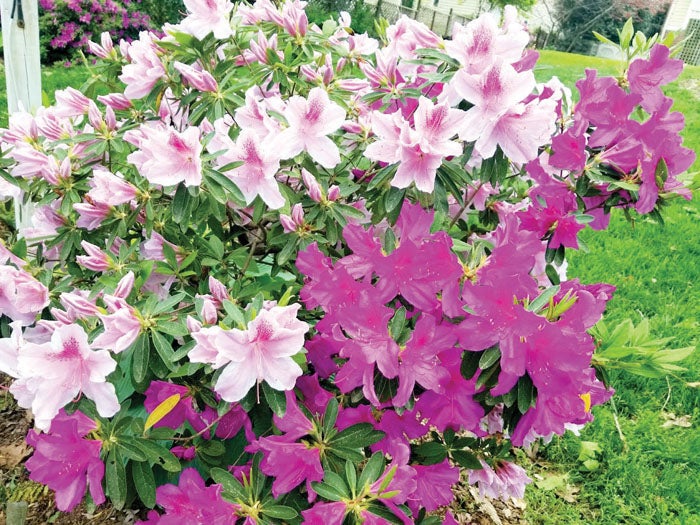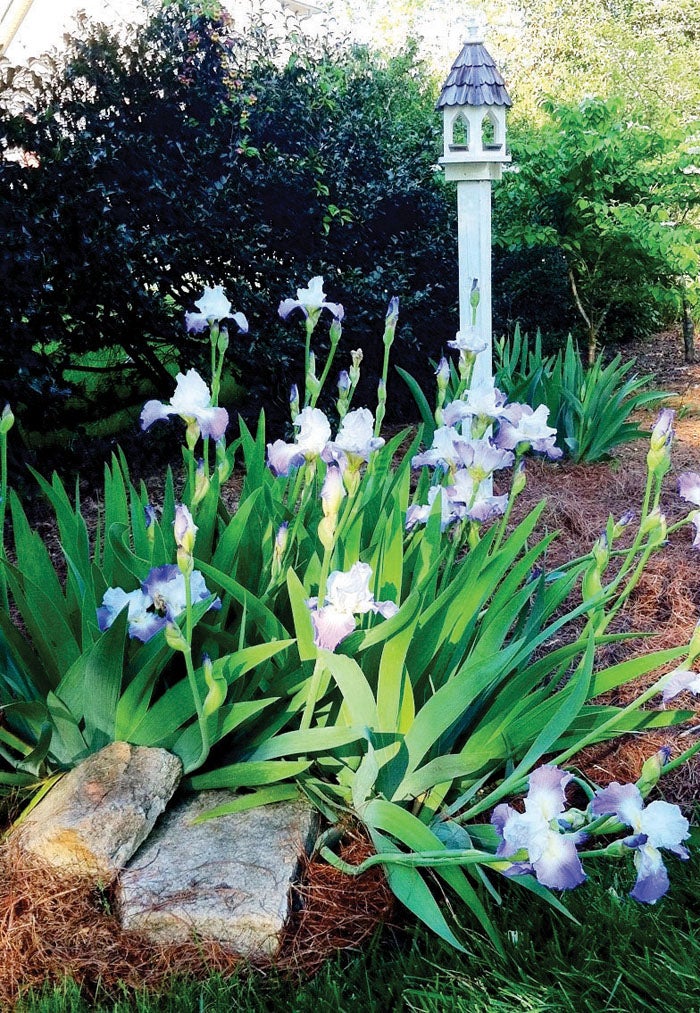Home & Garden Q&A: Applying fertilizer, controlling poison oak
Published 12:00 am Sunday, May 3, 2020

- Azalea with multi-color blooms.
The weather has been perfect over the past few weeks to work outdoors and many have questions about their lawns and landscapes. Below are a few gardening questions received this week that may be of interest.
Question: I have a leftover bag of weed and feed fertilizer. Can I still use it?
Answer: No, unfortunately it’s too late to fertilize cool season fescue lawns. Late fertilization promotes brown patch in fescue and other cool season lawns. However, broadleaf weed killers can be used with care during the summer growing season.
Question: I’ve been working outside in my yard and I think I may have gotten infected with poison oak. Is poison oak leafing out now? How can I control it?
Answer: Yes, poison oak is starting beginning to leaf-out now, and the sap from the leaves and cut stems are potent. Controlled sprays of (glyphosate) or a broad leaf brush killer will eliminate the noxious weed.
Question: While driving through the county I noticed many pastures and fields carpeted with bright yellow flowers. I was wondering what this flower was?
Answer: The yellow flowers are most likely buttercup weed. Buttercup weeds often grow as winter annuals and are found in many pastures that were possibly over grazed and abandoned fields. The winter annuals will die back as soon as the heat of the summer arrives. More information can be found at https://caldwell.ces.ncsu.edu/2014/01/buttercup-pasture-control/
Question: I have bearded irises that are blooming and spreading profusely. Unfortunately, they are have spread and I need to move them to another location. When is the best time of year to relocate irises?
Answer: The best time to plant bearded iris is July through September. This will allow them to become well established before winter. In a well-prepared bed, dig a shallow hole large enough to accommodate the rhizome or clump of rhizomes. Form a mound of soil in the center for the planting base. Make the mound high enough so the top of the rhizome is slightly above soil level. Spread the roots around the mound; fill with soil, and water them thoroughly. Irises usually have a high success rate when transplanting. Go to https://plants.ces.ncsu.edu/plants/iris/ for more detailed information.
Question: I have a beautiful azalea that has two different colored blooms on the same plant. Is this normal?
Answer: It’s common for many flowering shrubs to “sport” different color flowers on the same branch. The sporting is often caused by a virus or most likely a genetic mutation. Some camellia varieties are well known to produce multiple bloom colors.
Darrell Blackwelder deblackw@ncsu.edu is the retired horticulture agent and director with the North Carolina Cooperative Extension Service in Rowan County.





